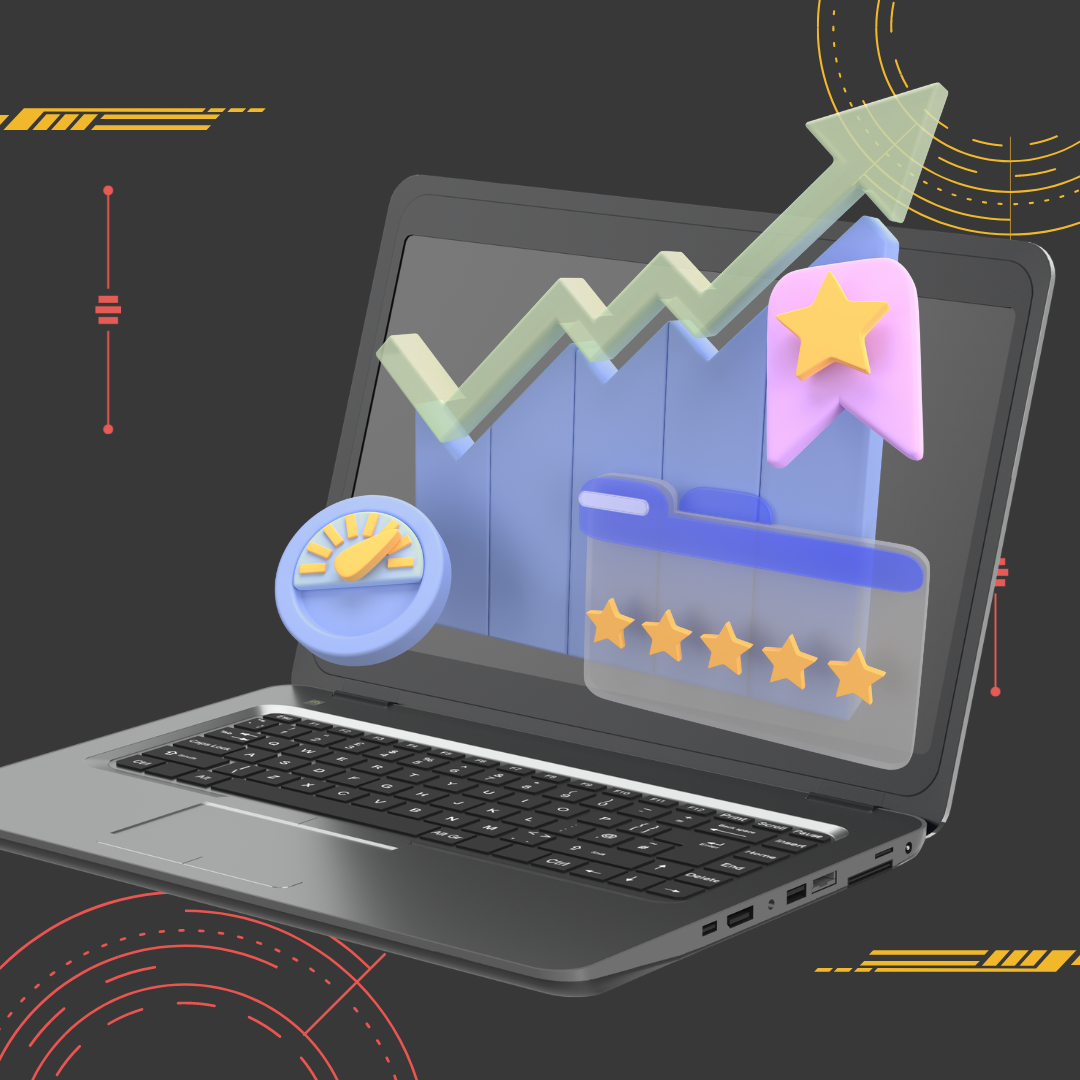Running an eCommerce business, especially on Shopify, can feel like juggling flaming swords. There's inventory to manage, customers to acquire, and endless marketing to juggle—all while ensuring your website is running smoothly.
While Shopify makes it easier for businesses to get off the ground, no platform can eliminate all the hurdles. So, let's dive into some of the most common challenges you might face as a Shopify store owner and how you can skillfully overcome them.
1. Managing Inventory
For any eCommerce business, inventory management is like a tightrope walk. Lean too far one way, and you overstock, losing money on excess goods; lean too far the other, and you face the dreaded "Out of Stock" message when your customers come knocking. Inventory issues can lead to disappointed customers or wasted capital.
The key is finding a balance between demand forecasting and smart restocking strategies. Fortunately, Shopify offers solutions like Stocky, which can help manage this delicate balancing act by tracking stock across multiple warehouses and alerting you when you need to restock.
Another trick is integrating with third-party tools like ShipHero, which can help streamline your fulfillment process and keep inventory flowing smoothly. By automating and optimizing how you manage stock, you can avoid overstocking or, even worse, running out of popular items when demand peaks.
2. Dealing with Shipping and Fulfillment
When your Shopify store is just starting, handling shipping yourself might seem doable. You've got your packing tape, boxes, and labels ready to go. But as your store scales, manually fulfilling orders becomes a nightmare. This is where many eCommerce owners hit a wall—shipping gets more complicated, delays increase, and suddenly, you're drowning in emails asking, "Where's my order?"
Automating shipping is the way to avoid getting overwhelmed. Apps like ShipStation make handling multiple carriers easier, tracking shipments, and even processing international orders. It's worth investing time upfront to optimize shipping, or else you'll find your time devoured by tedious tasks as your business grows.
3. Attracting the Right Customers
It's one thing to drive traffic to your store, but what if that traffic doesn't convert? Getting the right eyes on your products is a common challenge. While digital marketing tactics like SEO, Google Ads, and social media campaigns help, many Shopify store owners struggle with making sure their marketing dollars are well-spent. How do you find the perfect mix of organic and paid strategies?
Experts recommend starting small, with organic tactics like social media and content marketing, to build brand awareness without burning through your marketing budget. Once you see what resonates with your audience, you can double down on paid campaigns to amplify those successful messages. Think of it as a scientific experiment—start with free tests and, when you find a winner, pour more fuel on that fire.
4. Abandoned Carts
The dreaded abandoned cart—every eCommerce owner's nightmare. Customers browse, add items to their cart, and then vanish into thin air. What gives? While this problem isn't unique to Shopify, it's certainly a challenge that haunts the platform's users. It's a balancing act between keeping your customers engaged and not being too pushy.
One way to tackle this is by implementing automated abandoned cart recovery emails, reminding shoppers that their items are still waiting for them. Make these emails personal and sweeten the deal with a small discount or free shipping offer. Shopify offers built-in tools to help automate this process and increase your chances of converting that lingering shopping cart into a completed sale.
5. Customer Retention
Bringing in new customers is great, but holding on to them is where the real value lies. Customer retention can be a headache for many Shopify businesses. So how do you keep customers coming back for more?
One solution is to implement loyalty programs or subscription services. Reward your repeat customers with discounts, exclusive offers, or early access to new products. Additionally, email marketing campaigns are a great way to stay in touch with customers, offering personalized product recommendations or reminding them when it's time to reorder.
Building a community around your brand through social proof, such as influencer partnerships or user-generated content, also adds credibility and keeps customers engaged.
6. Optimizing Website Performance
No matter how amazing your products are, if your Shopify store performs poorly, you're in trouble. Slow page load times, glitches during checkout, or broken links can be death knells for your business. Shopify store owners often face challenges maintaining a smooth and speedy online store, especially as they add more features and functionalities.
One of the biggest culprits for sluggish performance is the overuse of apps. While Shopify’s app ecosystem provides incredible functionality—whether it’s for upselling, product reviews, or SEO optimization—these apps often come with a hidden cost: they bloat your site. Each additional app can add more code and scripts to your store, which in turn, slows down loading times and affects overall performance.
Even though many apps offer valuable features, not all are optimized to run efficiently, and combining too many can create a domino effect that results in slow response times, frustrated customers, and higher bounce rates.
Here's where a good developer or a smart set of tools comes in handy. Use Shopify's built-in features to optimize images and reduce excess code. You can also explore lazy loading to improve site speed.
Another important factor to consider is that it can significantly increase your application's load time if you include large libraries like jQuery in your project, especially on mobile devices with slower network connections.
Modern web development emphasizes performance and speed, and every kilobyte counts. By leveraging native JavaScript features and browser APIs, you can minimize your application's footprint and improve load times. For more information on why code libraries are redundant, read our blog.
Regularly test your site performance, especially on mobile, as more shoppers are using their phones to browse and buy. Shopify's analytics and reporting tools are excellent resources to monitor and fine-tune your site's performance.
7. Navigating Global Expansion
Ready to take your Shopify store global? Expanding into international markets can be a game-changer for eCommerce businesses, but it comes with its own set of challenges. From currency conversion to language translation to international shipping logistics, you'll need to navigate a new layer of complexity.
Start by tailoring your Shopify store to the regions you want to expand into. That means offering localized payment options, adjusting product descriptions for different markets, and ensuring smooth international shipping. Shopify’s multi-currency features and translation apps make this easier, but it still requires thorough planning.
Beyond just language and currency, it’s crucial to address the complexities of cross-border shipping, customs, duties, and taxes. Customers hate surprises at checkout, especially when those surprises are hefty fees upon delivery.
To offer a seamless experience, consider utilizing Delivered Duty Paid (DDP) shipping options. With DDP, you, the merchant, take responsibility for covering all import-related charges—customs duties, taxes, and handling fees—so that the customer knows exactly what they’re paying upfront. This can significantly boost trust and reduce abandoned carts due to unexpected costs.
Tools like Zonos and Global-e are essential in simplifying this process. Zonos integrates with Shopify to automate the calculation of international shipping costs, duties, and taxes, allowing you to offer DDP options at checkout. It also gives you the flexibility to display fully landed costs to customers, ensuring transparency.
Global-e, on the other hand, is an all-in-one cross-border solution that not only handles duties and taxes but also manages local payment methods, currency conversions, and even returns, making global expansion smoother and more accessible. These solutions streamline the customer experience, making it easier to handle international transactions without fear of hidden costs or delivery delays.
8. Staying Compliant with Security and Data Privacy
As your store grows, so does the sensitive customer data you need to protect. Cybersecurity and data privacy are massive concerns for any eCommerce business. With regulations like GDPR in Europe and increasing scrutiny around data use, keeping up with compliance can be tough. Luckily, Shopify takes care of most of the technical heavy lifting, but you still need to stay informed about your legal obligations.
Invest in secure payment gateways and ensure your customers' data is safe by using encrypted connections (Shopify does this automatically with SSL certificates). You should also review and regularly update your privacy policies to stay compliant with ever-changing regulations.
Wrapping it Up: eCommerce is a Marathon, Not a Sprint
There's no silver bullet to solve every eCommerce challenge, but you can tackle it head-on with the right tools and strategies. Whether fine-tuning your inventory, keeping customers engaged, or optimizing your site performance, Shopify offers solutions to help you stay ahead of the game.
But, like anything, it takes time, effort, and a willingness to adapt to new challenges. Stay nimble, keep testing, and don't hesitate to ask for help when needed. We're here for you!




